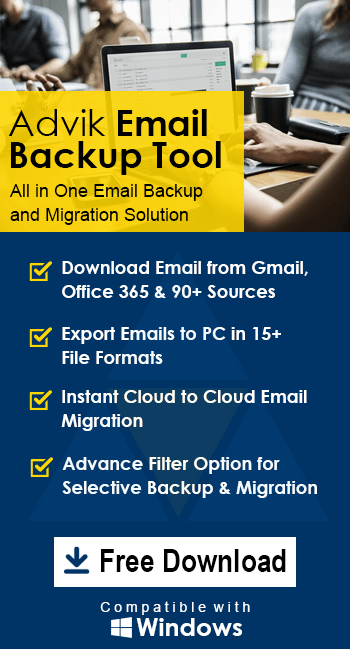How to Import MSG to Zoho Mail? Top 2 Solutions
Jenny Lowrence | October 29th, 2025 | Import Emails
Learn how to import MSG to Zoho Mail manually and automatically. Here, we will provide step-by-step instructions for importing MSG files into Zoho Mail account. Read this guide to know more.
Importing MSG files to Zoho Mail provides several advantages for users seeking a unified and cloud-based email experience. By migrating MSG emails to Zoho Mail, users can access their messages anytime, anywhere, without relying on the Outlook desktop application. Additionally, Zoho Mail provides enhanced security, spam protection, and reliable cloud storage, ensuring their imported MSG emails remain safe and accessible.
Now, let’s learn the methods to migrate MSG files to Zoho Mail.
How to Import MSG to Zoho Mail via Outlook?
You can manually upload MSG files to Zoho Mail using Outlook.
- Launch the Outlook email client on your system.
- Create a new folder in Outlook.
- Locate the MSG files on your system.
- Drag & drop MSG file into the newly created folder in Outlook.
- Now, go to File >> Add Account.
- Enter your Zoho Mail email address and click Connect.
- Provide IMAP Settings details of your Zoho account and complete the configuration process.
- Next, right-click on the newly created folder and move to Zoho mailbox.
Done! That’s how you can manually transfer MSG files to Zoho Mail. However, this method is so lengthy and time-consuming if you have a large number of files to import. And, Outlook must be installed on your system to complete the importing process.
If you need to migrate multiple MSG files to Zoho Mail and you want a fast and direct approach, then proceed with the automatic solution.
How to Open MSG File in Zoho Mail Without Outlook?
Download and install the Advik MSG Converter on your system. With this tool, you can directly import MSG to Zoho Mail in just a few simple clicks. This is fully automatic. Just add .msg files and enter Zoho Mail login credentials to begin the importing process. It can upload multiple .msg files in a single attempt. It ensures that all email properties and structure are preserved during the process.
Tap on the link below to download it for FREE.
Steps to Import MSG Files to Zoho Mail
1. Run the MSG to Zoho Migration tool on your system.

2. Click on Select Files or Folders to add .msg files.

3. Choose the required files and click Next.

4. Select IMAP as a saving option.

5. Enter your Zoho Mail account login details and click Next.

6. The software will start importing .msg files into Zoho mailbox.

Now sit back and relax! The software will complete the importing process in a few seconds.
Highlighted Features of MSG to Zoho Import Tool
- Bulk Importing: The software can upload single or multiple MSG files to Zoho Mail at once.
- Standalone Application: The tool can directly migrate MSG files without any external help.
- Multiple Saving Options: It can convert MSG to PDF, PST, MBOX, EML, HTML, and more.
- Preserve Email Attributes: It maintains attachments, sender/receiver info, etc., while importing.
- Retain Email Structure: The tool keeps the original structure of MSG folder even after the process.
- Advanced Filter Options: This utility provides email filter options to import only selected emails.
- Easy to Use: It is designed in such a way that any novice user can easily use it without any technical knowledge.
- Windows Compatible: It supports all the latest and old versions of Windows operating systems.
Conclusion
In this post, we have discussed how to import MSG to Zoho Mail. Here, we have explained both manual and automated solutions. Both methods are 100% workable. You can use any method as per your needs. However, the manual approach is free, but it comes with some limitations. So, we recommend that you use the professional method for importing MSG files into Zoho Mail without any hassle. Try the free trial version to check its working procedure before purchasing the licensed version.
Frequently Asked Questions
Q1. How many MSG files can import into Zoho Mail in a single process?
Ans. It depends on your requirements. The software has no restrictions on the number of files to import.
Q2. Does your software support Outlook 2021 exported MSG files?
Ans. Yes, the tool is compatible with MSG files of Outlook 2021, 2019, 2016, 2013, and previous versions.
Q3. Can I install this application on Windows Server 2016?
Ans. Yes, it supports all editions of the Microsoft Windows Operating system.


